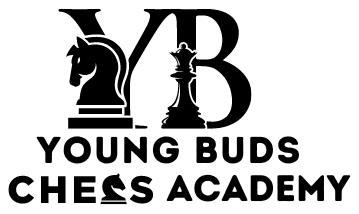When people think of chess, they often picture logic and strategy, but chess is also a deeply creative game that sparks imagination. For kids, chess is a canvas where they can express themselves, experiment with ideas, and craft unique solutions. By fostering creativity, chess helps children develop a mindset that enhances their personal growth and prepares them for diverse challenges. Here’s how to chess serves as a creative outlet for kids and why it’s a perfect activity for young minds.
The Art of Strategy in Chess
Every chess game is a chance to create something new. Unlike games with fixed paths, chess offers endless possibilities. Kids decide how to open, whether to attack or defend, and how to shape the game’s story. This freedom encourages them to think outside-the-box the box.
For example, a child might sacrifice a knight to open up their opponent’s king, creating a dramatic, unexpected attack. These bold moves reflect creativity, as kids experiment with unconventional ideas and learn what works. This mirrors the creative process in art or writing, where trial and error lead to innovation.
Storytelling Through Moves
Chess games are like stories, with each move adding to the narrative. Kids create plots—will their queen lead a heroic charge, or will their pawns slowly build an impregnable fortress? This storytelling aspect engages their imagination, letting them craft tales of triumph or redemption.
Kids often name their favorite games or describe them vividly, showing how chess taps into their narrative creativity. This ability to weave stories helps them in creative writing or drama, where constructing compelling narratives is key.
Problem-Solving with Flair
Chess puzzles, like mate-in-two challenges, are creative exercises. There’s often one correct solution, but finding it requires thinking beyond obvious moves. Kids learn to combine pieces in novel ways, like using a bishop and rook to trap a king. This inventive problem-solving fosters creative thinking.
This creativity spills into schoolwork. In science, kids might devise creative hypotheses for experiments; in history, they might craft imaginative essays about past events. Chess teaches them to approach problems with originality and confidence.
Expressing Individual Style
Every chess players develops a unique style. Some kids play aggressively, launching rapid attacks; others prefer positional play, building slowly and methodically. This personal expression is a form of creativity, as kids discover what resonates with them.
Encouraging kids to embrace their style boosts their confidence. They learn that there’s no one “right” way to play, just as there’s no single way to draw or write. This empowers them to trust their creative instincts in other pursuits.
Inspiring Innovation Through Competition
Tournaments and club games push kids to innovate. Facing new opponents with different strategies forces them to adapt and come up fresh ideas. A child might invent a new trap to counter an opponent’s favorite opening, showcasing creative resilience.
This competitive environment mirrors real-world challenges, where innovation thrives under pressure. Kids learn to think creatively while staying focused, a skill that’s valuable in creative fields like design or entrepreneurship.
Connecting Creativity to Other Arts
Chess has inspired artists, writers, and musicians for centuries. Kids who play chess-themed games often explore related creative outlets, like drawing chess pieces or writing poems about epic matches. Some even create their own chess variants, inventing new rules or boards.
Parents can amplify this by linking chess to other arts. For example, ask your child to draw their favorite chess moment or write a story about a magical chessboard. These activities reinforce chess as a creative outlet while expanding their artistic skills.
Building a Creative Mindset
Creativity in chess isn’t just about making clever moves—it’s about embracing a mindset. Kids learn that creativity requires risk-taking, practice, and learning from mistakes. A failed attack teaches them to refine their ideas, just like an artist revises a sketch.
This mindset benefits kids in school and life. They become more open to experimenting with new ideas, whether it’s trying a new new sport, joining a theater club, or tackling a challenging project. Chess shows them that creativity is a skill they can hone.
Getting Started with Chess Creatively
To spark your child’s creativity through chess, introduce the game as an adventure. Use story-based lessons, like those on ChessKid.com, where pieces have personalities. Play casual games where you encourage wild, experimental moves rather than focusing on winning.
Join a chess club or try online platforms where kids can create puzzles or share games. Celebrate their creative moments, like a surprising checkmate or a unique opening, to reinforce their imagination. Chess puzzles and books with fun themes also keep the creative spark alive.
Conclusion
Chess is a vibrant creative outlet for kids, blending strategy with imagination. It’s a game where they can tell stories, solve problems, and express themselves uniquely. By playing chess, kids develop a creative mindset that will inspire them in art, academics, and life beyond. Introduce your child to chess, and watch their creativity take flight.
